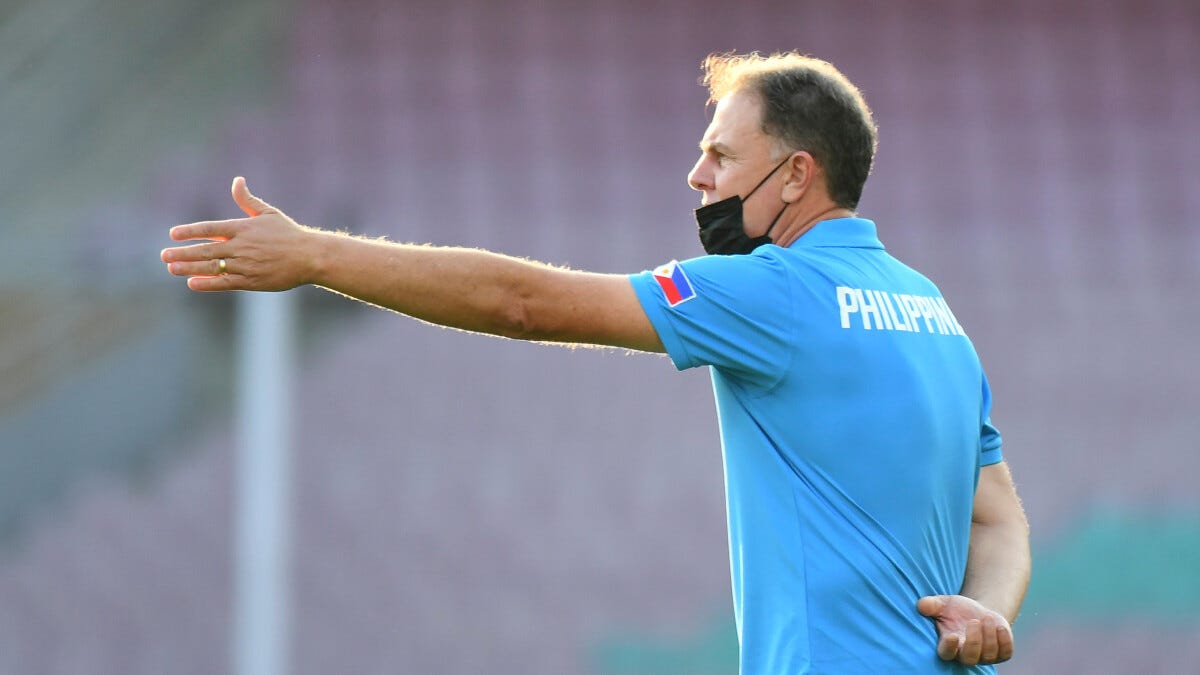The Big Interview: Alen Stajcic
The former Australia head coach has guided the Philippines to a first World Cup. But their journey has been no ordinary story as they embark on a first major tournament...

Alen Stajcic laughs when I ask if he is the busiest head coach in the world right now. When we first catch up at the start of the year, he is in England on holiday with his family, but even then there is a work method to his madness, as he plans to take in some domestic games before heading off to Spain to meet his Philippines team at the Pinatar Cup.
He has just returned from the USA where he was watching try-outs for the nation’s new youth teams, of which he is also the Under 17s head coach as they look for a more permanent solution, before heading back to Manila for try-outs in the Philippines themselves.
“I have been a little bit busy, yeah,” he chuckles. “But it’s all good, it’s all good fun.”
After Spain, he heads to Guam for the U17 2024 Asia Cup qualifiers, and then it’s on to Vietnam for the South East Asia Games with the first team. It is non-stop, and that’s before thinking a first World Cup for the country, which is more front and centred in his mind when we catch up again later in the year.
Even with everything else going on, his love for football extends so far that when we speak he is driving home from taking his son to football training
It has been a remarkable rise for a nation making its debut on the world stage. Since Filipino businessman Jefferson Cheng poured money into the team back in 2017, the Philippines has been on a rapid rise ever since, but it has been no ordinary story piecing a team together, with only three of the 23 selected currently playing their football within the country.
“Not many players had clubs, only three of the 23 we took to the Asia Cup last year had a club…”
Stajcic took over in 2021, tasked with guiding the country to a first World Cup, but he admits he was very much starting from “ground zero”, making their progress over the past 18 months all the more remarkable under the experienced former Australia head coach.
“It just started off out of nowhere really,” he says. “We were in lockdown late 2021, towards November, and I got a call from a friend who had contact with Jefferson and within a day I said ‘yes, let’s do it’.
“They said we’d have a 10-week camp in Los Angeles pre-Asia Cup. I wasn’t doing anything, I’d resigned from the [Central Coast] Mariners a few months earlier, so we went over and did the best we can really. The players had been in lockdown, they hadn’t played for a long time and not many were playing regularly.”
Check out over 100 more unique stories in WFC’s Premium section, available for just £45 for 12 months, paid in one go, or a £6 a month rolling subscription.
All subscriptions come with a 7-day free trial to allow you to explore our full archive.
Plus, guarantee you everything that is to come over the next 12 months…
The Philippines national team was only established in the 1980s, and despite a huge population had never been a challenger on the international stage, or even within Asia itself.
In 2017 when Cheng got involved and eventually became Team Manager while sponsoring the national team, they launched “Project Jordan”, aimed at a successful 2018 Asia Cup which would act as qualifiers for the 2019 World Cup.
Cheng hired British coach Richard Boon, but he was replaced before the tournament, with identification camps held in the USA for the many young girls who held Filipino citizenship. Ranked just 72nd in the world at the time, Philippines lost 5-0 to Korea Republic in the play-off for a World Cup spot.
Over the four years leading up to Stajcic being hired, Philippines went through seven head coaches in search of success, without a strong domestic league and players pieced together from around the world, they needed an experienced head to guide them.
“When I said we were starting from ground zero, it really was,” he says with a wry laugh. “Not many players had clubs, only three of the 23 we took to the Asia Cup last year had a club. Two were in Japan and one was in Sweden, and she was a new addition. The rest were without a club.
Keep reading with a 7-day free trial
Subscribe to Women's Football Chronicles to keep reading this post and get 7 days of free access to the full post archives.


